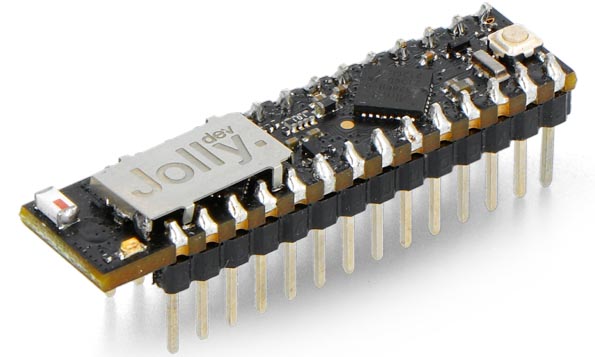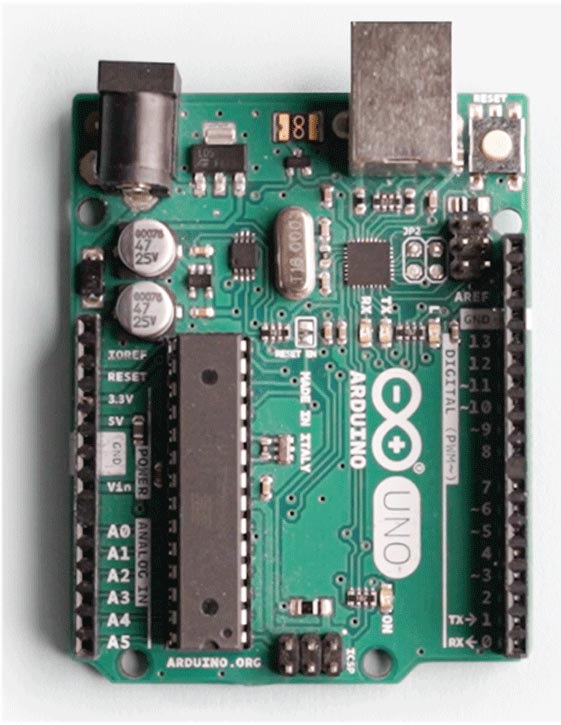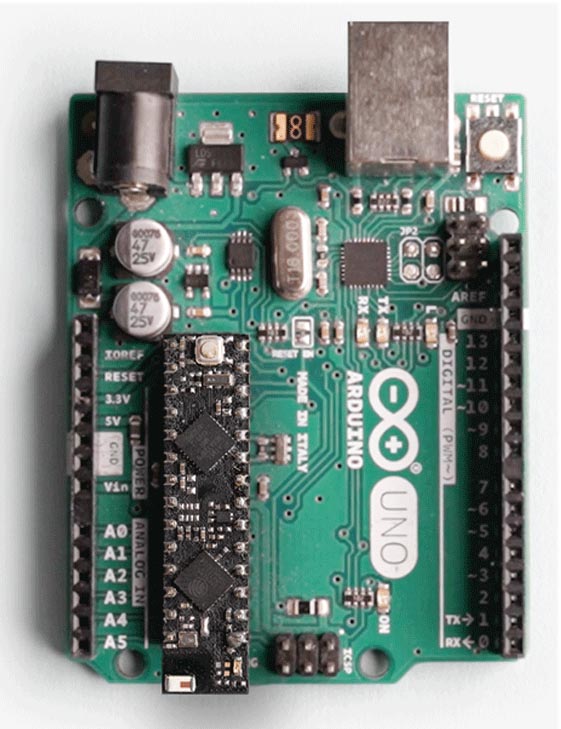A development team led by electronics engineer and Arduino co-founder Gianluca Martino has completed the first phase of a crowdfunding project, outsourcing the production and sales of the Jolly module to Swiss company Meteca SA.
Jolly is a new electronic module for makers and Arduino UNO lovers. The module has integrated Wi-Fi, to infinitely extend the potential of your projects into the new world of IoT.

You only need to remove the ATmega microcontroller, replace it with the Jolly module and you will have an IoT board with Wi-Fi. To date, all the existing projects are mutually compatible.
The board, as mentioned, has been designed primarily to expand the functionality offered by the Arduino UNO, to transform it into a modern IoT device without altering its features or the user experience.
Since the board takes the place of the ATMega328P of the Arduino UNO, it was first necessary to replace the latter with its newer SMD version called ATMega328PB. This microcontroller allows us to preserve the full compatibility of the pinout, firmware and hardware architecture of its predecessor, but in a much smaller space.
Therefore, an additional microcontroller was inserted to allow the addition of Wi-Fi functionality. The most obvious choice was to use an ESP8285, equivalent to the ESP8266 but with integrated 2 MB flash, an essential feature to keep the board size small.
Finally, since the two microcontrollers do not operate with the same power supply domain (5 V for ATMega328PB and 3.3 V for ESP8285) we have also included a voltage regulation and interfacing circuit between the two chips.
In this way, the board can be easily substituted to the ATMega328P without any kind of circuit modification to the Arduino UNO, ensuring an automatic compatibility with all projects made so far for the Arduino UNO.
 |
 |
The board is finally equipped with a BUILTIN LED and an integrated Antenna.
The two microcontrollers are connected to each other through two digital interfaces: one SPI and one UART. In particular, the SPI interface – which is the same exposed on the pinout of the module – is used for data exchange, while the UART, is the exclusive prerogative of programming, both for the ATMega328PB and the ESP8285.
The serial interface of the latter is active only during the programming phase so as not to interfere with the normal operation of the serial ATMega328PB. The programming of the Wi-Fi chip is possible thanks to the presence of a boot key for the latter and a special firmware in the ATMega328PB.
The single-sided assembly of the components, together with the presence of castellated holes, make this board perfect both for use on Arduino UNO to replace the ATmega328P, and to be soldered on other boards as a stand-alone module. An Arduino platform was developed dedicated to the programming of the board that allows the firmware of both microcontrollers to be updated, by using the IDE.